About
Julia was born and raised in Japan. Already in her youth, she was exposed to the hospitality industry, working part-time in a bagel shop and a restaurant that also had a small bar. After graduating from high school, she moved to the United States to attend Cornell University. Alongside her studies in interior architecture and design, she worked for Cornell Catering and various other restaurants and bars. Eventually she decided not to continue pursuing her degree in design, but instead focus on hospitality full-time—bartending, specifically. One of the places she worked at while living in Ithaca was Rulloff’s Restaurant and Bar. She started out as a server/cocktail waitress, then became a bar-back, and finally worked her way up to bartender. This was her introduction to the fast-paced world of bartending and making mixed drinks. At the time, she was also a bartender for Cornell Catering and worked many of the events for the university’s faculties and trustees. After an encounter with a guest who had very particular remarks on how to do his Manhattan and how she used a jigger, Julia started to read and learn more about “The Classics.”
During a visit home to Japan she walked into a bar in Kobe, where she met a barman who was very meticulous about his ice. He would hand-chip perfect spheres of ice for even the simplest highballs. He did not discriminate against simple things, but rather made them the best that they could possibly be. This inspired her immensely, as Japanese bartending is very different from American or European. Attention to detail is key: ingredients, tools, the way the bartender moves, the philosophy of bartending, the level of hospitality, it all builds to form one unit and melts together into one well-rounded experience that is unparalleled in this world.
Upon returning to the United States, Julia moved to Baltimore. She spent two years there, working not only in bars but also in kitchens for a while, in order to gain more experience in that field. One of the bars she called home in Baltimore, Rye Craft Cocktails, opened a second venue called Willow, and she was given the opportunity to develop its bar program. Soon, however, it was time for her to move on again. Julia wanted to push herself and continue her education. A conversation with a guest led her to apply for an internship at The Aviary, an internationally recognized bar located in Chicago. They were one of the first bars to adopt what Ferran Adrià, Heston Blumenthal, and Grant Achatz, owner of The Aviary, were doing in the world of fine dining and adapt it for the cocktail scene. Achatz, who is an American trailblazer in progressive cuisine and a proponent of innovative dining, also runs various critically acclaimed restaurants in Chicago. Among all the smoke, liquid nitrogen, and hydrocolloids, The Office—The Aviary’s speakeasy specializing in cocktails and rare spirits—was what pulled Julia in. This was the bar she envisioned herself working behind. She realized, though, that first there would be much more to learn on the line at The Aviary and accepted a position as a “bar chef.” After some time, Julia was working in both The Aviary and The Office, and worked her way up to head bartender. She earned her spurs, working for Achatz for two years, developing cocktails, training staff, and running the line. Eventually, though, it was time for her to move on again and to show the rest of the world what she had learned. When she put in her notice at The Aviary, she had no concrete plans for the future. Soon enough, though, she received a call from Jack McGarry, owner of The Dead Rabbit in New York City, asking if she would be interested in joining a new project set to open in Chicago: GreenRiver. She accepted and worked there from 2015 to 2017. In that time, Julia developed the opening menu of thirty-two cocktails with Jack McGarry. She also spearheaded the development of the second menu, a selection of thirty-two cocktails and eight spiritfrees, together with the bartending team, launching it in the fall of 2016. GreenRiver was awarded a Michelin star but closed down in 2018. The spiritfrees, in particular, were important for guests, some of whom preferred to enjoy the incredible quality of the chef’s food without drinking alcohol. When Julia finally left GreenRiver, she intended to travel, explore, and learn as much as possible.
At first, she started doing consulting work for a company called Menu Collective in Chicago. She developed cocktails for the first Starbucks Reserve Roastery in Seattle, which for the first time incorporated a cocktail bar into their program. There will only be a few of these around the world. The Roastery in Milan launched in September 2018, followed by branches in Tokyo, New York, and Shanghai, with one in Chicago set to open soon. Julia also developed about twenty spiritfree tea-based drinks which are to be featured across a number of different locations. Another project that Julia took on in 2017 was to develop the world’s first mezcal-based liqueur. Stephen Torres of the magazine Bill of Fare enlisted her for this task. His vision was to have a mezcal liqueur that was inspired by his grand-mother Maria’s mole recipe. Julia only received the ingredient list of the mole—the rest is kept a secret! After many trips to Mexico City and Oaxaca, and a great number of taste tests, the liqueur has been available since November 2018 and is called Criollo de Oaxaca.
In 2017, Julia also published a manifesto on spiritfrees—a move away from the word “mocktail” and a movement towards inclusivity at bars for those who do not drink alcohol. This opened up an opportunity for her to speak at the Brooklyn Bar Convent and Tales of the Cocktail in 2018. In November 2017 Julia married bartender and photographer Sammy Faze and took this as a chance to explore her roots. They celebrated their wedding with only ten guests in Japan. Afterwards she started spending a lot of time in Japan. She went on one very insightful trip, in particular, with the Shiga Prefecture government and the Japan External Trade Organization (JETRO) to explore the tea-growing region of Omi in Shiga (close to Kyoto). Seeing their recent projects in the region deeply inspired Julia and she felt it was time to put all these experiences together and create her own bar. And thus, Kumiko was born.
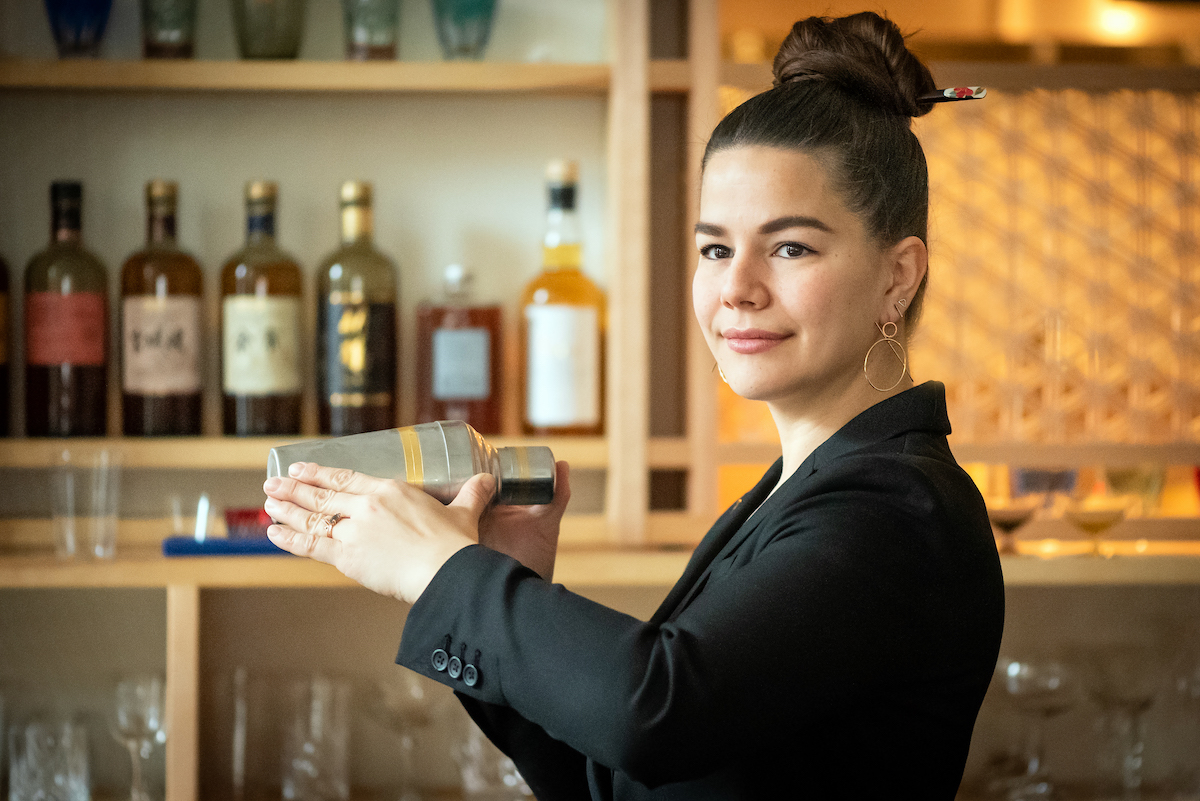
Kumiko
The influence of Julia’s heritage runs deep through the heart of Kumiko. While she understands that a Japanese bar outside Japan will never be a Japanese bar per se, the core values that she wants to share and develop together with the team all center around Japanese principles and practices. The team is comprised of about twenty people, split between service and kitchen staff. There are eight seats at the bar and twenty-two seats at various tables. Both food and drinks are served with an emphasis on enjoying the two in combination. It is a school, playground, and home for the creative minds working there. Julia shares all that she has learned in her life about good communication, hospitality, and how to mix a drink with her team. These skills come from diverse sources: her experiences in Japan, her mother, her co-workers at the small bagel shop in a high-end department store, as well as from a small bar in Kobe. It is because of their intensive training in the fundamentals of their craft that the team is able to accommodate the guests’ desires while still staying true to the Kumiko way: an unwavering commitment to detail, with a heart for hospitality, and a desire to be the best they can be in each moment.
For all the bars that Julia has patronized and worked at throughout her career, the one thing that stands out to her about Japanese bars is the way they make you feel: totally and perfectly taken care of. The awareness of the bartenders as they work behind the bar, and their skill to orchestrate every moment without being overbearing is an art form just as exquisite as the precision with which they handle spirit, jigger, glass, and ice.
The name Kumiko comes from a Japanese technique performed by master woodworkers to create patterns with intricately cut pieces of wood. Mastery of this displays true craftsmanship, attention to detail, and dedication. This bar, therefore, is an homage to craftspeople around the world.
Inspiration
For Julia, it is all about a taste or flavor when she is inspired to develop a new creation. She chooses one flavor to start with and then works in and around it. It is less a spirit-centered process, rather a flavor- and color-focused one. Julia’s knowledge about the culinary world weaves its way into the process as well. She also reflects on the specific kinds of people for whom she creates a drink. This technique was put to the test once before, when she was working at The Office and would create a menu based on people and the conversations she had with them, or even on a piece of clothing they were wearing. For Valentine’s Day, as a unique challenge and creative menu, she even took the Myers-Briggs personality test as a basis for her conversation-enhanced, individual-based creations.
Favorite cocktail
A balanced cocktail. However, if she had to give that cocktail a name, Julia says, the classic Old Fashioned, as for so many others, is on top of her list. This cocktail that basically consists of water, sugar, bitters, and spirit allows you to play with all these components, which are very simple on the one hand, but also very diverse on the other. They allow substitutions of any kind and the drink often works with a vast range of sweeteners, bitter components, and spirits. The way Julia talks about this cocktail shows with how much depth she thinks about cocktails in general: the single components, how they are put together, what they do to a cocktail, how they appear visually, but also how they react on the palate. It bears a close resemblance to the concoction she made for me when I was there. I have rarely seen this much attention to detail and thought go into a cocktail. An enthusiast like me is instantly hooked, and as one starts to muse over a simple cocktail for a long time, it becomes so much more than just a drink.
Check out Julia’s cocktail recipe: Highball No. 1.
Favorite bar
Billy Sunday in Chicago.
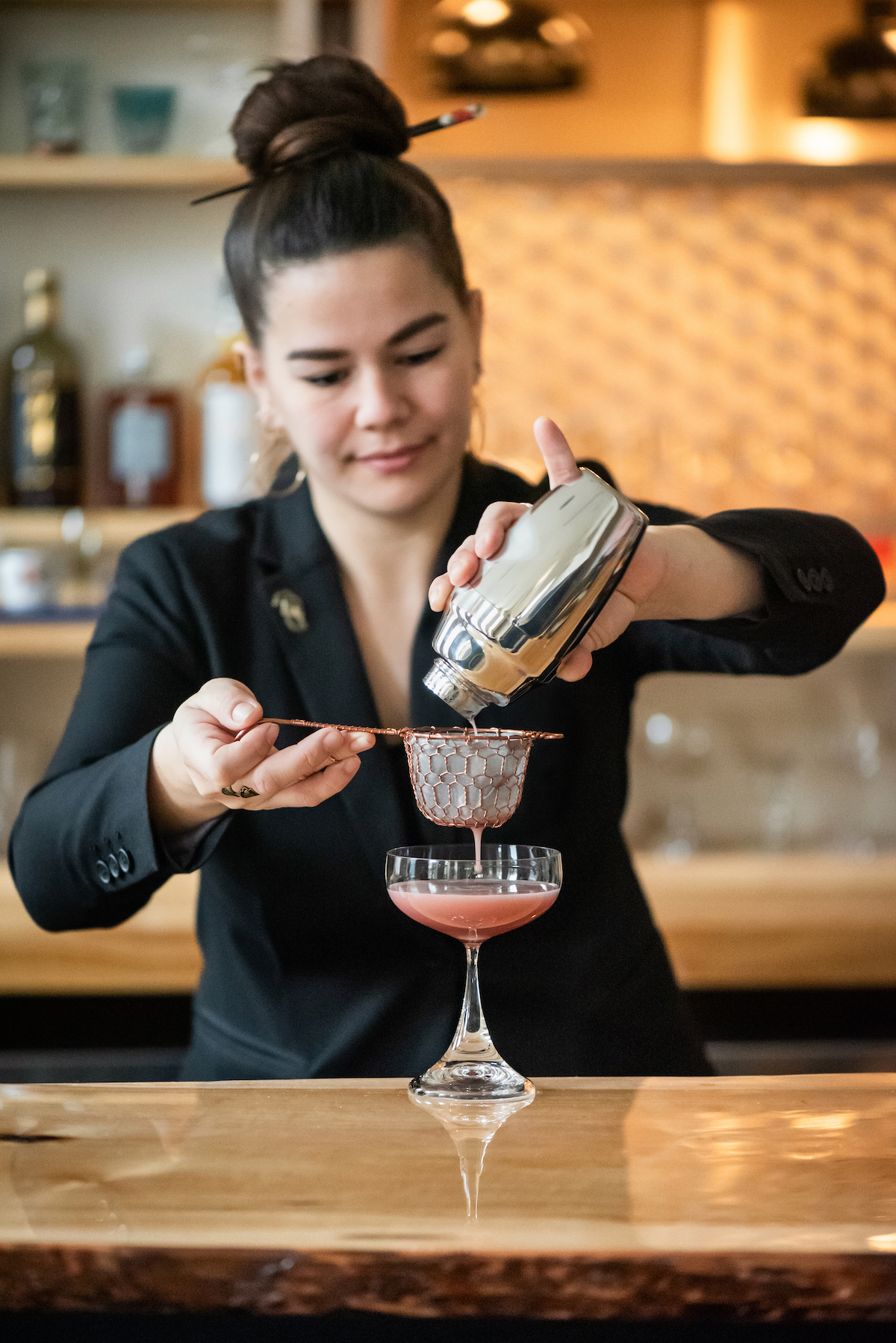
The future of the bar world
Bartenders all around the world are getting better at what they do. More information is available, and people are more motivated than ever to try something new. Julia notes that the guests have also become more knowledgeable, more experimental, and more curious about new ideas. This, in turn, pushes the bartenders to be even better. As a consequence, quality is soaring all over the world. Julia feels that as the demand for amazing service and quality increases, so will the respect and appreciation for this art. Following this, the industry will be much more guest-driven, focusing on their wants and needs more than just odd ingredients, smoke and mirrors.
Advice for opening a bar
One needs to know the identity of the bar, being very clear what it is intended to represent. It should be clear what the demographic of the guests will be. What the mission of the bar is, is another vital aspect. Before GreenRiver opened, there was much mystique surrounding the project. Many people, even the press were misinformed, under the impression that GreenRiver was to be an Irish Pub, which could not be further from the truth.
Craziest customer experience
It is exciting to see how a relationship formed with a guest can lead to more than just an exchange of money for goods. A man who went by the name “The Pirate,” wearing a cowboy hat and boots would visit the bar in Baltimore regularly to see Julia. He lived on a boat in the Marina and other than that, did not share much about himself. For weeks he would consistently come to the bar, ask for Jose Cuervo Gold, be upset when it wasn’t carried, and settle with “whatever.” After some time and several conversations, he started to open up to Julia a little bit more. She was able to let him know when he crossed lines in speaking to the staff or other guests, and gradually he began to ask for recommendations of other tequilas to sip on. Cuervo led to Herradura, which led to his new found favourite, Chinaco Anejo. There was a point when he invited Julia and a couple of the other bartenders to join him and some friends on a cruise to Miami. This story would truly be crazy and much longer if Julia had agreed. But suffice to say, it is crazy how much a bartender can impact another person’s life.
Chicago
Chicago was the first city in the United States where Julia felt at home. She loves the city and she feels very connected to the people and the food and beverage culture there. The bar world is big, but at the same time it is a tightly knit community, and she is happy to be a part of this big family.
Target in life
She would like to own a bar herself one day and I have not doubt that with her talent and age she will achieve this goal. At the same time, she would like to teach more. Make herself available to new people that want to pursue a bartender career. She would love to serve as a mentor for them.
Best decision in life so far
Working at the Aviary was a game changer for her. It was not an easy decision to move to Chicago, and it was certainly not an easy to work in such an intense environment; but, it broadened her horizons immensely. Leaving The Aviary was a big leap of faith in herself and her abilities. She has grown a lot in this city and has come to put down roots. I wish her lots of success for her future adventures in the cocktail world.
Images: Cocktails ©Kailley Lindman Interior & Portraits ©Sammy Faze

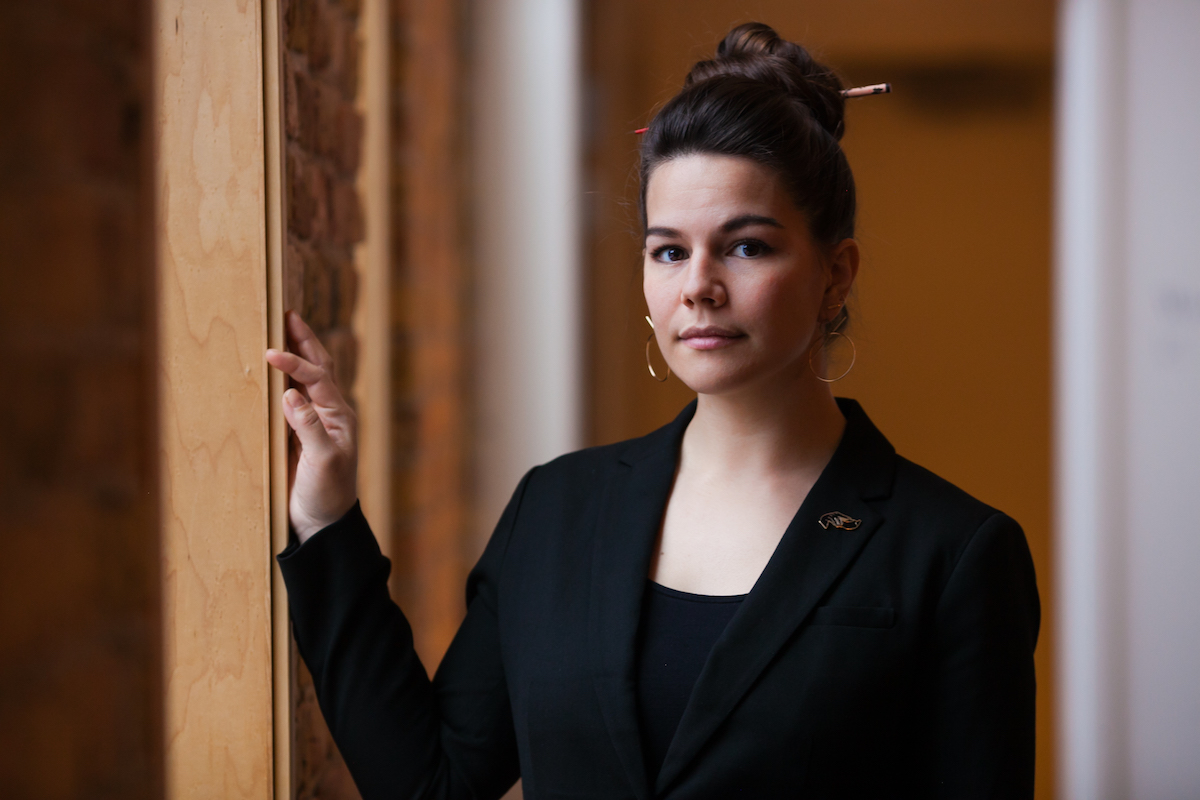
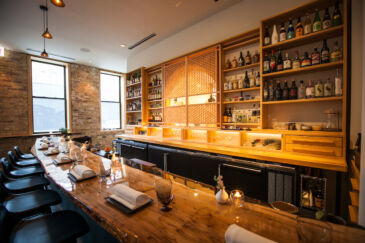
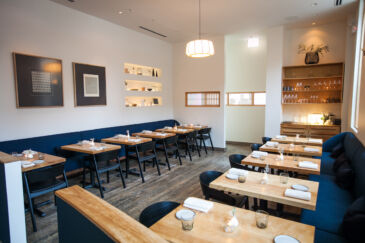
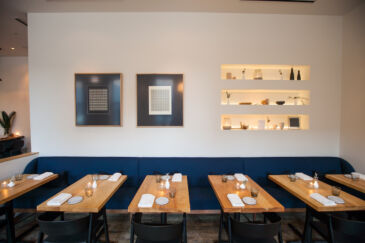
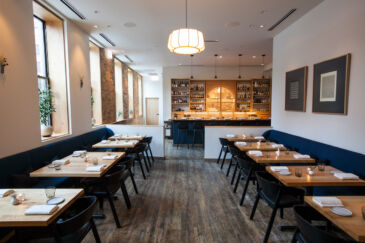
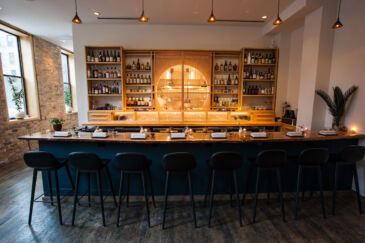
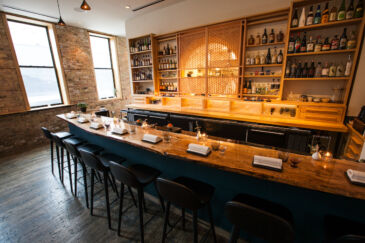
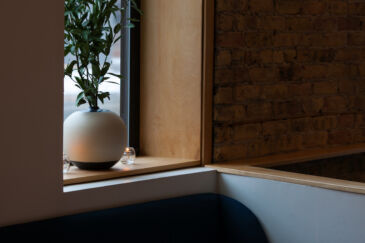
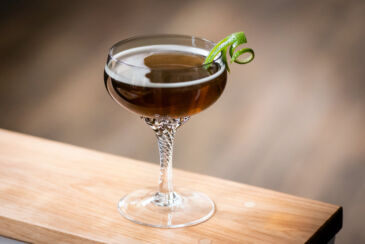
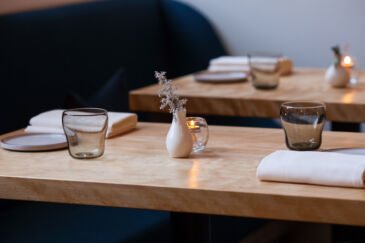
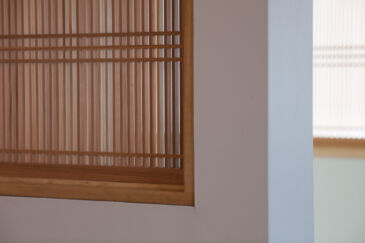
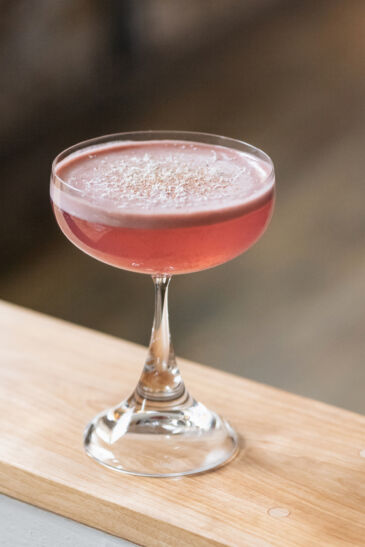
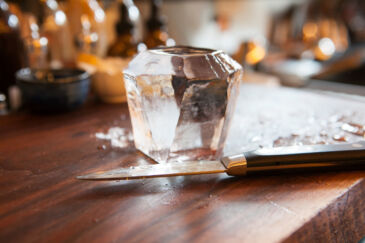
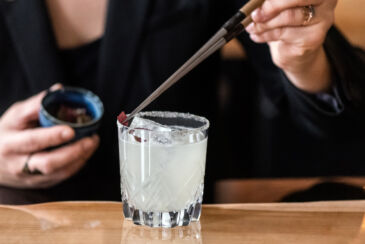
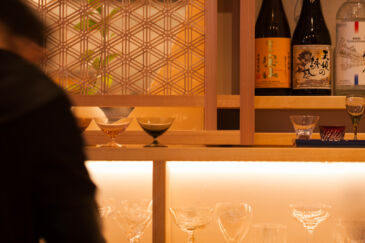
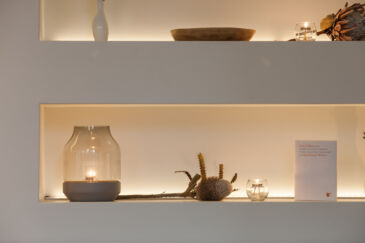
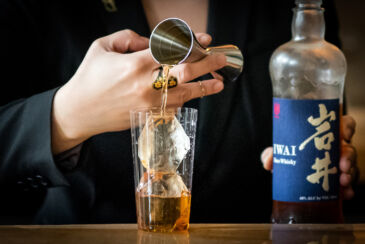
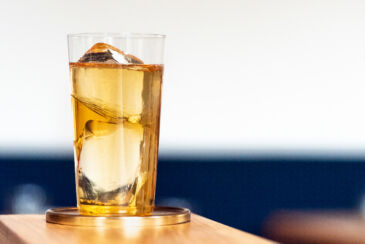
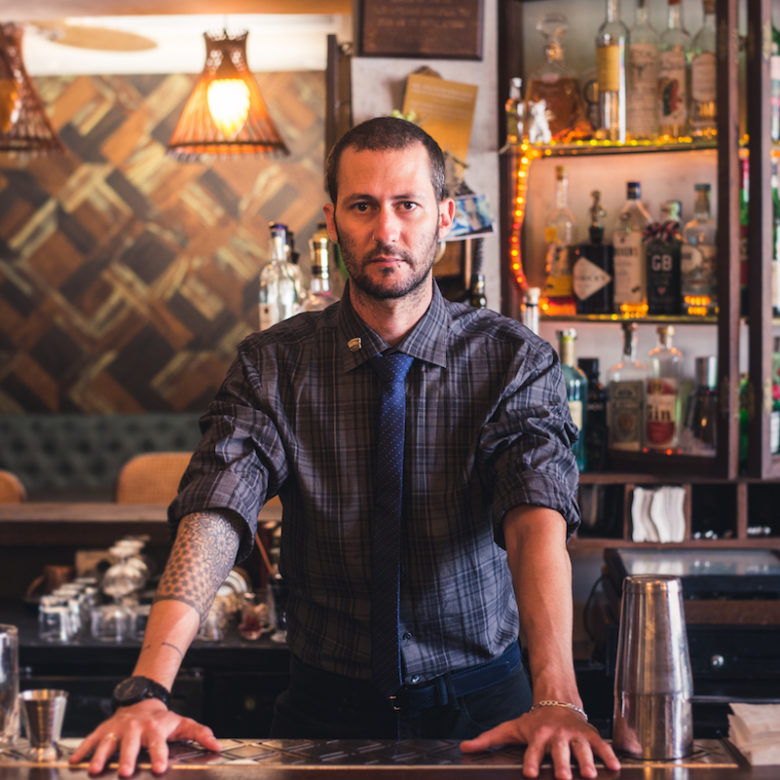
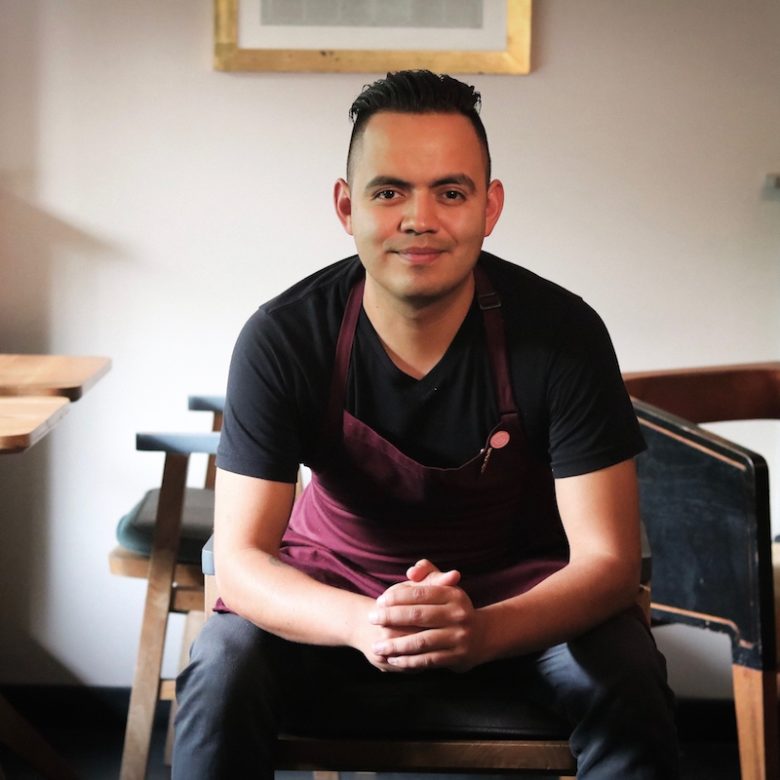

No Comments